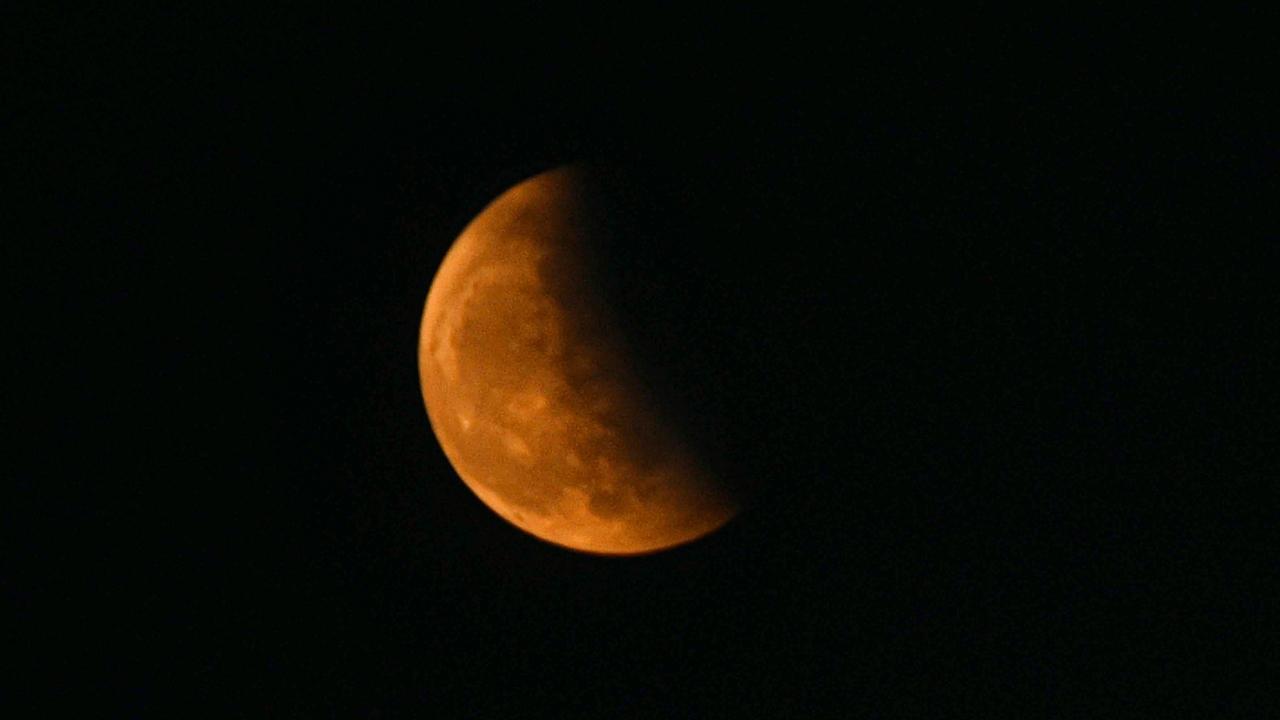The First Lunar Eclipse of 2024 will occur during the festival of colors, Holi, and will be a Penumbral Lunar Eclipse. Here's all you may need to know about the Chandra Grahan

Representational Pic/File/PTI
First Lunar Eclipse 2024 will occur during the festival of colors, Holi, and will be a Penumbral Lunar Eclipse. In 2024, four eclipses are expected to be seen. There will be two lunar eclipses, also known as Chandra Grahan. As the celestial spectacle of a lunar eclipse graces the night sky in 2024, here's all you may need to know about this captivating astronomical event.
The first lunar eclipse of 2024 occurs on March 24-25.
There are three types of lunar eclipses: total, partial, and penumbral. A total lunar eclipse happens when the Earth totally prevents sunlight from reaching the Moon, producing a stunning reddish hue known as a "blood moon." A partial lunar eclipse happens when only a piece of the Moon is in the Earth's shadow, but a penumbral lunar eclipse occurs when the Moon passes through the Earth's penumbral shadow, causing a gradual darkening of the lunar surface.
The visibility of a lunar eclipse is determined by several factors, including geographical location, weather conditions, and local atmospheric clarity. To increase your chances of seeing this celestial event, seek out a spot with an unobstructed view of the night sky.
A lunar eclipse's duration varies, but total eclipses often last a few hours. The exact duration is determined on how the Earth, Moon, and Sun align during the eclipse.
Unlike solar eclipses, lunar eclipses are completely safe to see with the naked eye. You don't need any special equipment to appreciate the spectacular sight of the Moon performing its heavenly dance with the Earth and Sun.
Lunar eclipses have captivated humanity for millennia, generating awe and wonder in all cultures and civilizations. Lunar eclipses were frequently viewed as omens or divine messages in many ancient societies, but modern astronomers study them to learn about celestial motion dynamics and planetary geometry.
Many astronomical groups and observatories host public viewing events for lunar eclipses, allowing enthusiasts to come together and share their passion for astronomy. A lunar eclipse's visibility is highly dependent on weather conditions. Clear skies are excellent for witnessing celestial events, so pay attention to weather forecasts in the days leading up to the eclipse. Be prepared to change your plans if inclement weather is predicted.
 Subscribe today by clicking the link and stay updated with the latest news!" Click here!
Subscribe today by clicking the link and stay updated with the latest news!" Click here!










